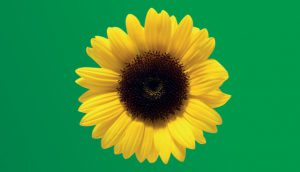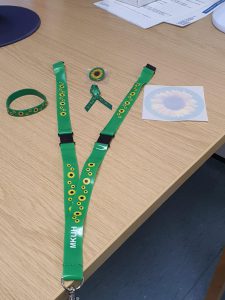Hidden Disabilities – Proud to wear the Sunflower

Milton Keynes University Hospital are proud to be part of the Hidden disabilities Sunflower scheme and to help raise awareness of hidden disabilities.
Why is important to recognise the sunflower lanyard, pin, sticker or other forms of hidden disabilities identifications and what do they represent.
DID YOU KNOW
The Hidden Disabilities Sunflower also known as the sunflower lanyard scheme came about in 2016 after staff at Gatwick Airport realised that there wasn’t enough awareness of hidden disabilities among staff or passengers at airports. This made travelling by plane that bit more difficult, or inaccessible altogether, for some whose disabilities aren’t immediately obvious.
To tackle this, staff at Gatwick teamed up with national and local charities to design a lanyard, which would indicate that its wearer might need some extra assistance in certain situations. This simple idea had a big impact, and soon other companies and organisations caught on, so Gatwick gave permission to anyone and everyone to use it. Now, it’s recognised all over the UK.
Globally 1 in 7 of us live with a disability. And of those, 80% are invisible. That is 1 billion people who are living with a non-visible disability.
While some of us experience a disability that is visible, many of us have a non-visible conditions. These non-visible disabilities, also known as invisible or hidden disabilities are not immediately obvious. They can be physical, mental or neurological and include, but are not limited to, autism and Asperger syndrome, cognitive functions such as learning difficulties and dementia, as well as mental health conditions and speech, visual or hearing loss or both.. They also include respiratory and chronic conditions such as asthma, diabetes, chronic pain and sleep disorders . Also many people experience a combination of both visible and non-visible conditions.
 Do you qualify to wear the Sunflower?
Do you qualify to wear the Sunflower?
There is no qualifying list of invisible disabilities. If you have a non-visible disability, you can choose to wear the Sunflower to indicate that you may need additional support, help or simply a little more time.
How can wearing the Sunflower benefit you?
You may find that people around you may ask what they can do to assist you, and you can use your Sunflower to tell people who are aware of the Sunflower about the additional type of help you may need.
Never assume there’s nothing wrong with someone who is or isn’t wearing the sunflower.
Nobody has to tell you they have a disability, or explain what it is. People can choose to keep this private. Some people may choose to wear a lanyard or carry a badge to show that they have a non-visible disability. It shows they may need extra support .Other people with non-visible disabilities prefer not to do this. Some people may wear a different lanyard or badge to alert you to their disability or health, wellbeing or other medical conditions
Where can you get a Sunflower lanyard
We feel that it is important that everyone who has a non-visible disability and who would benefit from wearing a Sunflower lanyard is able to access one. We also welcome allies of the sunflower to wear a lanyard. You don’t need to have a disability to wear a the lanyard, and allies of the Sunflower and Ability network disability equality are always welcome. To obtain a lanyard, please contact the Hidden Disabilities Sunflower website. You can also contact your local supermarket to see if they may also have lanyards available.
Last Modified: 2:37pm 20/04/2023
